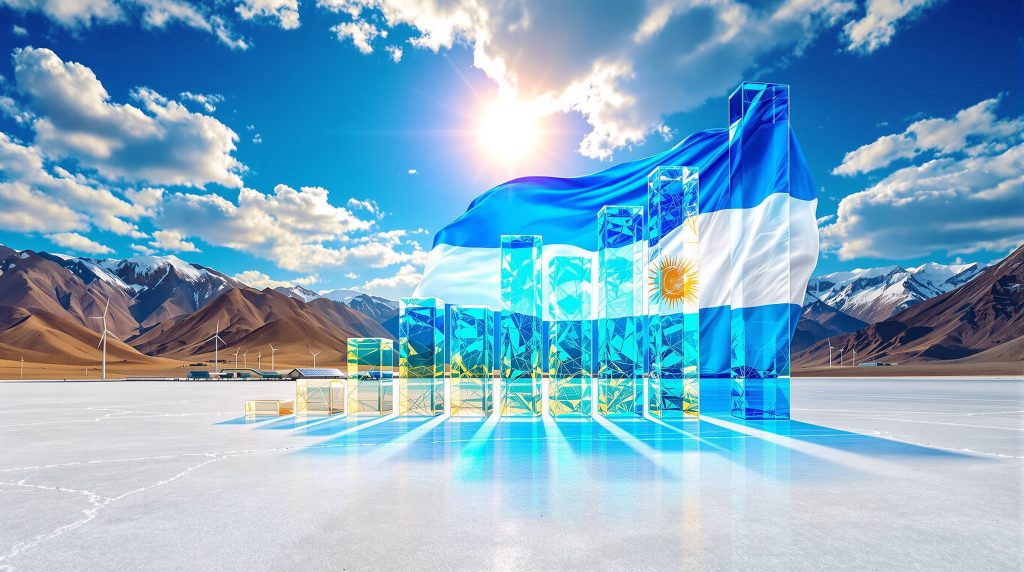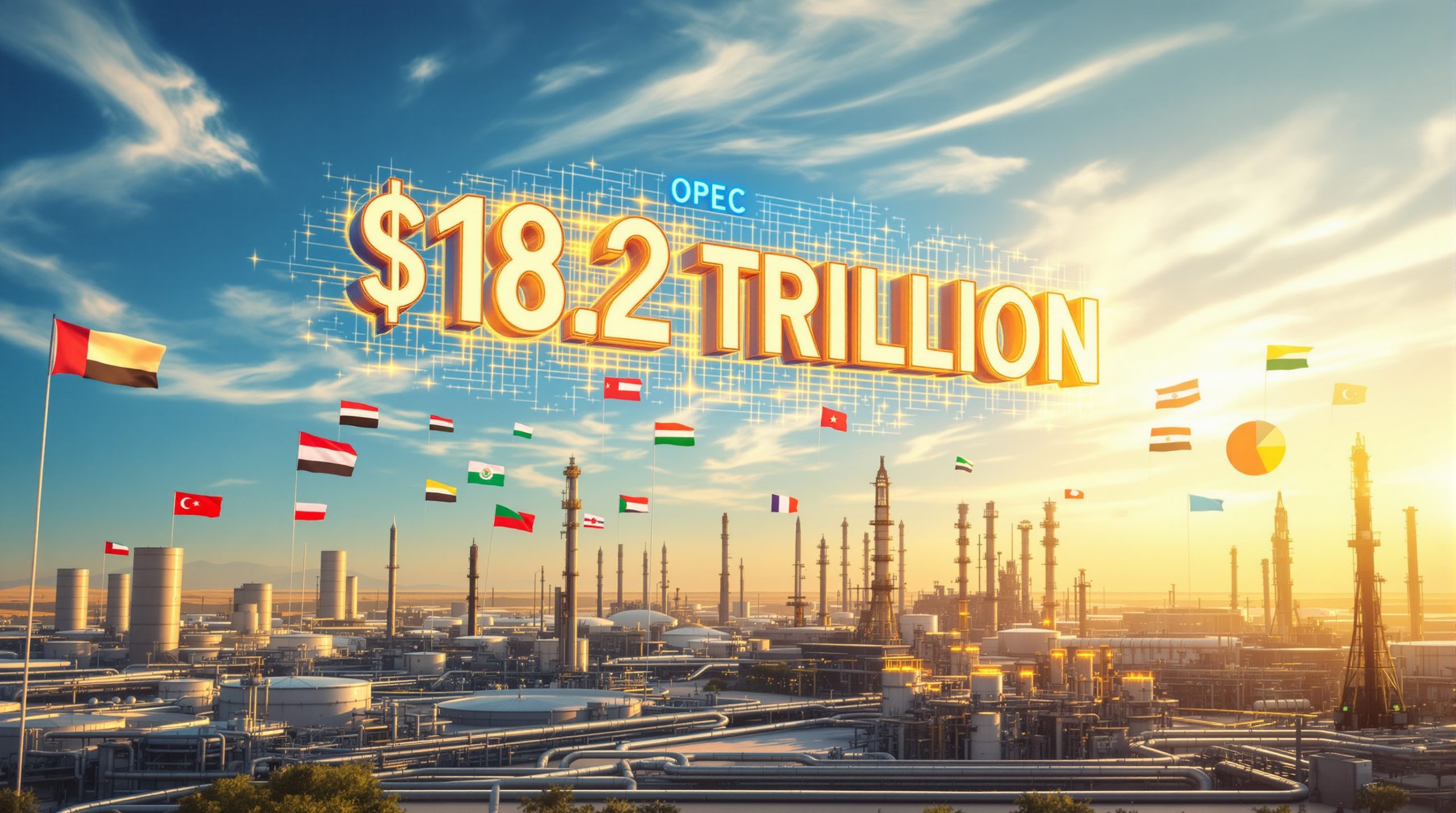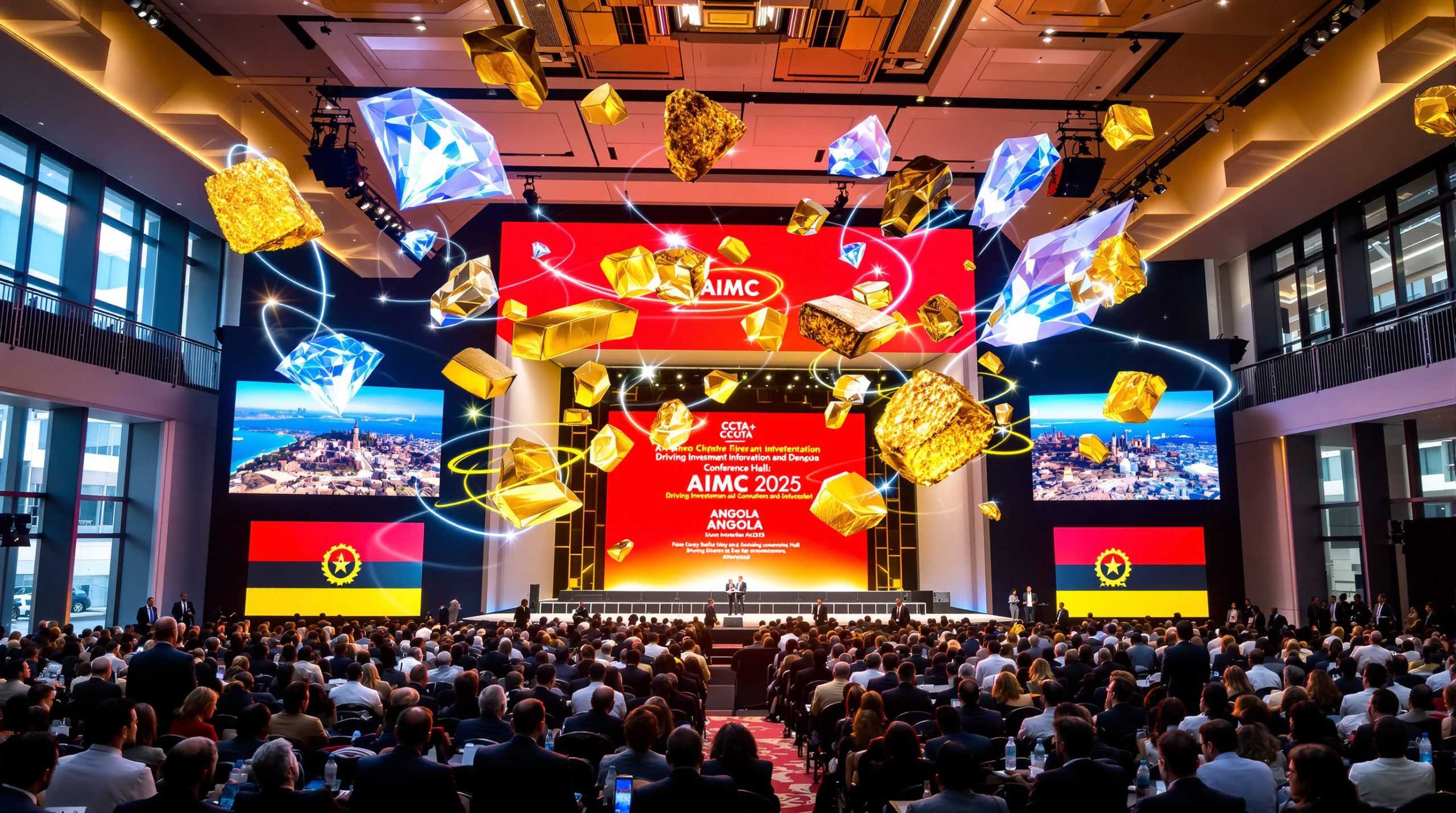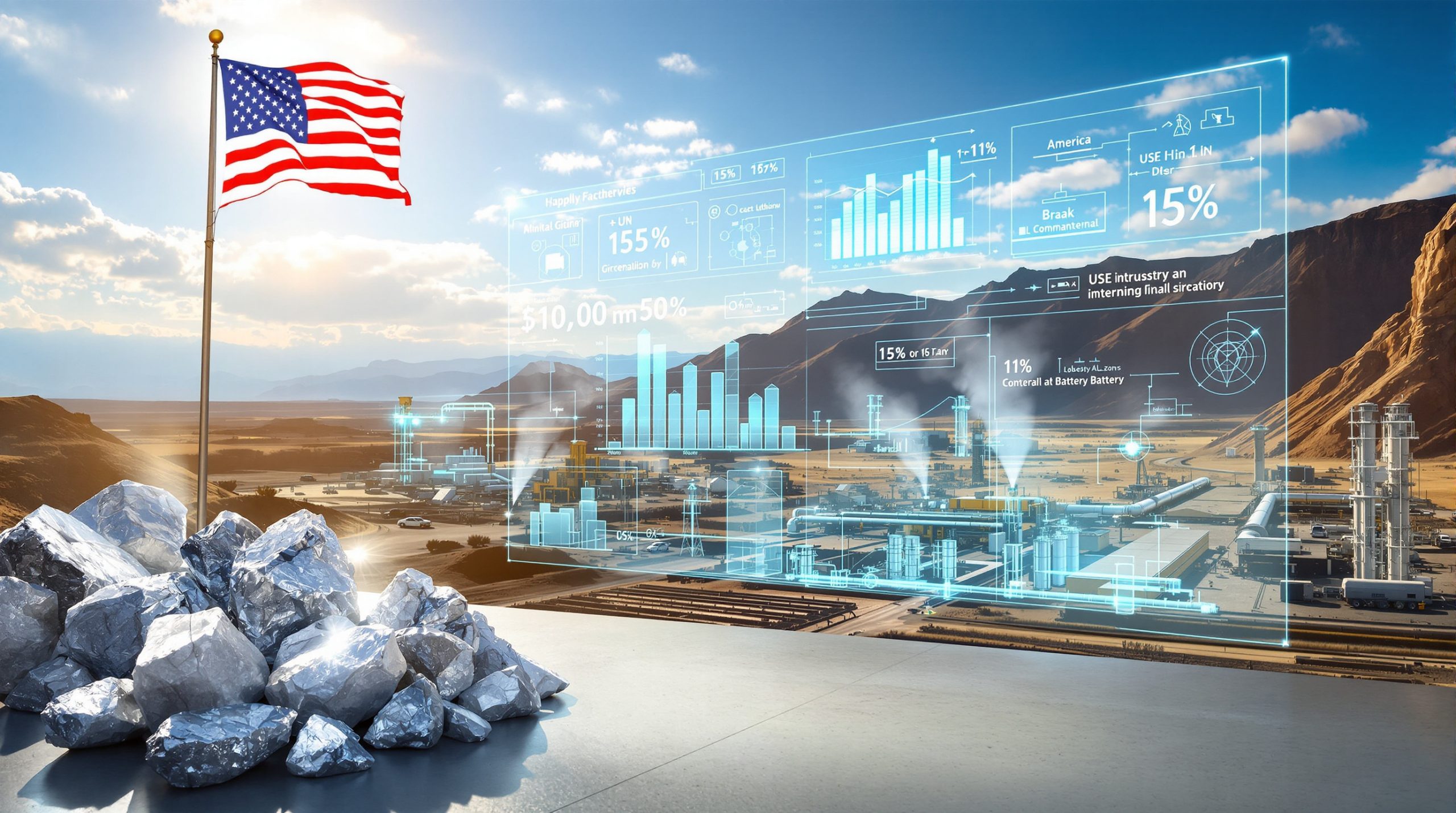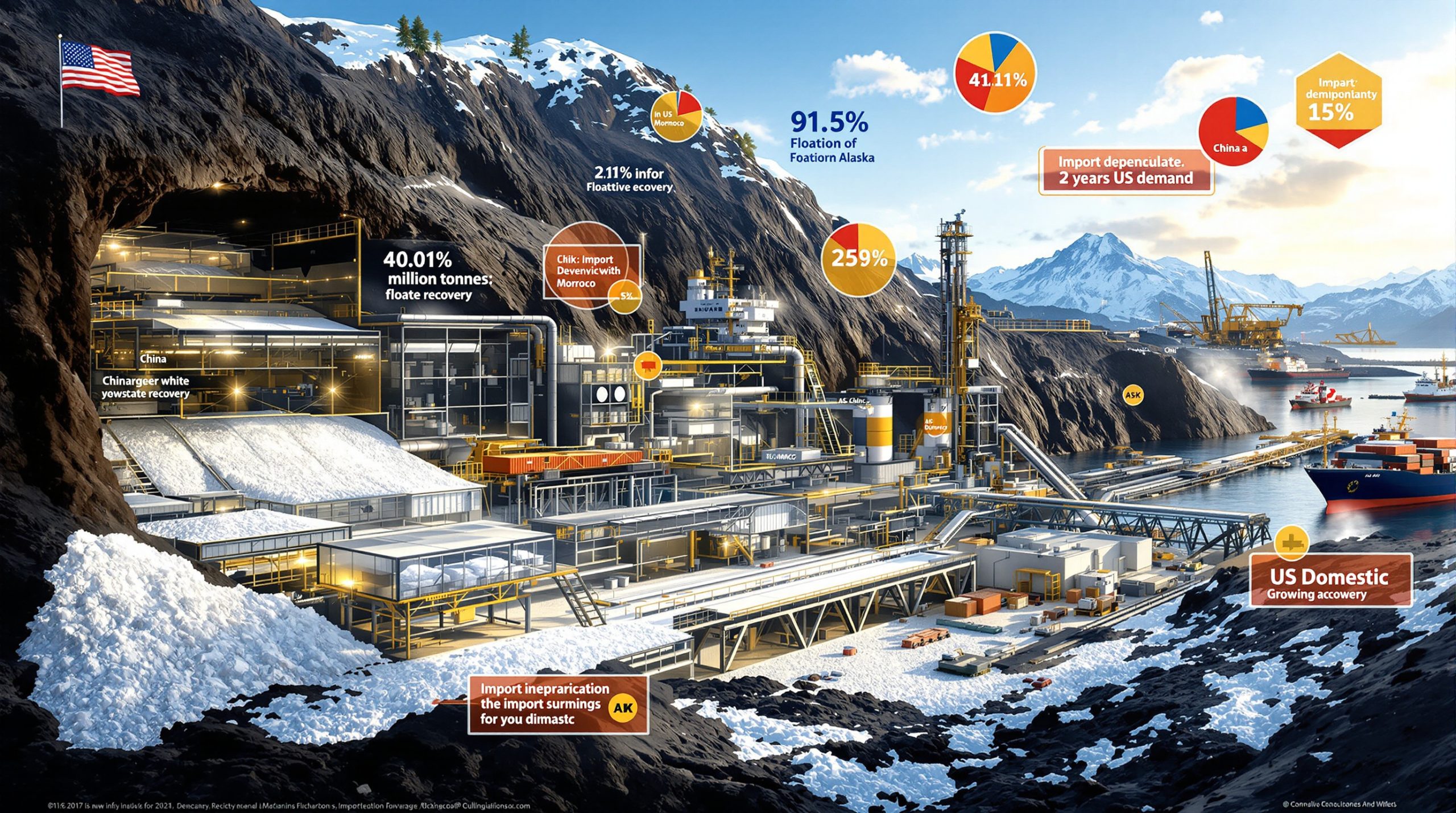Understanding Argentina's Strategic Mineral Resource Framework
Argentina's comprehensive approach to critical minerals development represents a fundamental shift from traditional commodity extraction to building integrated supply chain ecosystems. The Argentina critical minerals strategy leverages its position within the renowned lithium triangle alongside extensive Andean copper deposits to create diversified mineral processing capabilities that extend far beyond raw material exports.
The country's geological advantages span multiple provinces, each offering distinct strategic assets. According to the U.S. Geological Survey's Mineral Commodity Summaries 2024, Argentina holds approximately 22 million tonnes of identified lithium resources and 15 million tonnes of contained copper reserves, positioning it as a significant player in the global critical minerals landscape.
Core Elements of Argentina's Mineral Strategy
Argentina's mineral development framework centers on several interconnected components that distinguish it from conventional mining approaches. The establishment of streamlined regulatory pathways serves international investors while maintaining environmental and social standards. Luis Lucero, Argentina's Secretary for Mining, emphasized at LME Week 2025 that the country possesses excellent geology, a tested legal system for mining tenure, and a well-educated workforce with very few community conflicts compared with other regions.
Furthermore, the development of regional mining clusters maximises operational efficiency by co-locating extraction, processing, and support facilities. This approach reduces transportation costs and creates concentrated centres of expertise that attract additional investment and technological innovation.
In addition, integration of renewable energy infrastructure directly with mineral extraction operations addresses both cost concerns and environmental considerations. Argentina's abundant solar and wind resources in mining regions provide opportunities for energy-independent operations that reduce long-term operational expenses.
Geographic Distribution of Critical Mineral Resources
Argentina's critical mineral wealth spans multiple provinces, each contributing unique strategic advantages to the nation's overall resource portfolio:
| Region | Primary Minerals | Development Status | Strategic Advantages |
|---|---|---|---|
| Salta Province | Lithium, Potash | Active Production | Established infrastructure, proven reserves |
| Jujuy Province | Lithium, Boron | Expanding Operations | Government support, proximity to processing facilities |
| Catamarca Province | Lithium, Copper | Development Phase | High-grade deposits, emerging infrastructure |
| San Juan Province | Copper, Gold | Mature Operations | Stable regulatory environment, skilled workforce |
| Mendoza Province | Uranium, Copper | Exploration Stage | Diverse mineral potential, research partnerships |
The Cauchari-Olaroz basin in Jujuy Province represents one of the world's largest lithium brine deposits, while Salta Province hosts major operations including Galaxy Lithium's Sal de Vida project and Ganfeng Lithium's facilities, according to official data from Argentina's Mining Secretariat.
What Makes Argentina's Lithium Strategy Different from Other Producers?
Argentina's approach to lithium development emphasises technological innovation and sustainable extraction methods that address environmental concerns while accelerating production timelines. This strategy differentiates the country from purely export-focused approaches prevalent in other South American producers.
The nation produced approximately 39,000 tonnes of lithium carbonate equivalent in 2023, establishing it as the world's fourth-largest lithium producer according to U.S. Geological Survey data. This production occurs within a global context where total lithium production reached approximately 180,000 tonnes LCE in 2023, providing valuable argentina lithium insights for industry observers.
Technological Innovation in Brine Processing
Traditional evaporation pond methods for lithium extraction require 18-24 months to produce lithium from brine sources, as documented by the International Energy Agency's analysis of critical mineral supply chains. These conventional approaches also consume approximately 500,000 gallons of water per tonne of lithium produced.
Direct lithium extraction (DLE) technologies offer significant improvements over traditional methods, potentially reducing processing time to under 12 months while dramatically decreasing water consumption. However, commercial-scale implementation of DLE technologies remains limited, with independent verification of claimed water savings at large-scale operations still developing.
Argentina's mining sector is pioneering the adoption of these advanced extraction technologies, positioning the country at the forefront of sustainable lithium production methods. The emphasis on technological advancement reflects broader recognition that environmental stewardship and operational efficiency must align for long-term industry viability.
Partnership Models with International Companies
Argentina has developed joint venture frameworks that extend beyond traditional mining agreements to include mandatory technology transfer components and local workforce development requirements. Luis Lucero highlighted at LME Week 2025 that Argentina offers a unique platform to support the world's shift to clean energy through its diverse resource base including the lithium triangle and renewable energy potential.
These partnership structures ensure long-term benefits extend beyond resource extraction to include:
- Advanced processing technique development and implementation
- Local engineering expertise building through skills transfer programs
- Sustainable mining practice implementation with international standards
- Community development program integration addressing local needs
How is Copper Development Complementing Argentina's Energy Transition Goals?
Argentina's copper strategy focuses on developing large-scale mining operations that supply both domestic renewable energy infrastructure and international markets. This approach creates synergistic relationships between mineral extraction and clean energy deployment, supporting the nation's broader energy transition security objectives.
The country's copper reserves of 15 million tonnes of contained copper, as reported by the U.S. Geological Survey, provide substantial foundation for expanded production. Argentina produced approximately 74,000 tonnes of copper in 2023, representing significant growth potential compared to regional leader Chile's 5.2 million tonnes annual production.
Major Copper Projects Driving Economic Growth
Argentina's copper development pipeline reflects growing international recognition of the country's geological potential and investment climate. Luis Lucero stated at LME Week 2025 that Argentina will eventually be a very big player in copper as part of its comprehensive critical minerals strategy.
The strategic importance of copper in energy transition applications cannot be understated. Electric vehicles require 2-4 times more copper than internal combustion engine vehicles, while wind turbines require approximately 4-5 tonnes of copper per megawatt of capacity, according to International Energy Agency analysis. This aligns with broader global copper production trends observed worldwide.
Integration with Renewable Energy Infrastructure
Copper mining operations are being strategically co-located with solar and wind installations across Argentina's mining regions. This integration creates energy-independent mining complexes that reduce operational costs while demonstrating environmental stewardship to international partners and local communities.
The abundant renewable energy resources in Argentina's mining regions provide competitive advantages through reduced energy costs for copper processing operations. Copper smelting and refining require approximately 300-500 kWh per tonne of copper concentrate, making energy costs a significant operational consideration.
What Role Does Natural Gas Play in Argentina's Critical Minerals Strategy?
The Vaca Muerta shale formation represents one of the world's largest unconventional natural gas resources, containing an estimated 308 trillion cubic feet of technically recoverable natural gas according to U.S. Energy Information Administration analysis. This resource provides Argentina with substantial natural gas reserves supporting both domestic energy security and export potential.
Argentina's natural gas production reached approximately 1.4 trillion cubic feet in 2022, with significant potential for expansion. Luis Lucero noted at LME Week 2025 that the country's vast shale gas reserves position it as a growing LNG exporter, creating revenue streams that can fund critical mineral development projects.
LNG Export Development Timeline
Argentina's natural gas abundance creates opportunities for liquefied natural gas exports that can generate substantial revenue for reinvestment in critical minerals infrastructure. The development of LNG export capabilities requires significant infrastructure investment in processing facilities, pipelines, and port terminals.
The timeline for LNG export development involves multiple phases of infrastructure construction and capacity building. Initial phases focus on domestic pipeline infrastructure and processing capability development, while subsequent phases target export terminal construction and international market development.
Energy Security for Mining Operations
Abundant natural gas reserves ensure cost-effective energy supply for energy-intensive mineral processing operations. Lithium processing from brines requires substantial thermal and electrical energy inputs, while copper smelting operations demand significant energy resources for ore processing and metal refining.
This energy security provides competitive advantages over regions dependent on imported energy sources, enabling Argentina to maintain stable operational costs for mining companies while supporting domestic energy needs across multiple sectors.
How is Argentina Addressing Uranium and Nuclear Energy Development?
Argentina's nuclear energy program, combined with significant uranium reserves, creates opportunities for both domestic energy production and international fuel supply. The country operates three nuclear power reactors providing approximately 5% of national electricity, according to World Nuclear Association data.
Current nuclear facilities include Atucha I (357 MW), Atucha II (692 MW), and Embalse (648 MW), representing established nuclear expertise and infrastructure. Argentina produced approximately 45 tonnes of uranium in 2023, demonstrating existing extraction capabilities with potential for expansion. These developments mirror broader uranium investment trends observed globally.
Small Modular Reactor (SMR) Initiative
Argentina is developing the CAREM-25 small modular reactor, a 27 MW prototype representing indigenous nuclear technology development. The CAREM (Central Argentina de Elementos Modulares) project is designed by CNEA (Comisión Nacional de Energía Atómica) and NASA (Nucleoeléctrica Argentina S.A.), with construction beginning in 2014 at the Lima site in Buenos Aires Province.
The government's commitment to SMR development includes several strategic components:
- Domestic uranium fuel cycle capabilities supporting energy independence
- Advanced reactor technology development for potential export markets
- Integration with renewable energy grid systems for baseload power
- Research and development partnerships with international nuclear organisations
Uranium Mining Expansion Plans
Luis Lucero emphasised at LME Week 2025 that Argentina has outstanding potential in renewable energy, from solar and wind to nuclear power. The country's uranium resources provide foundation for expanded domestic nuclear programs while creating potential for international supply agreements.
Argentina's uranium development strategy focuses on supporting domestic nuclear energy requirements while building capabilities for international market participation. The integration of uranium mining with nuclear technology development creates comprehensive nuclear sector capabilities spanning the entire fuel cycle.
What Investment Incentives is Argentina Offering to Critical Mineral Companies?
Argentina has implemented comprehensive investment promotion frameworks designed to attract international capital while ensuring long-term economic benefits for domestic stakeholders. The regulatory environment emphasises transparency and stability for mining investments across multiple jurisdictions and political administrations, reflecting the broader Argentina critical minerals strategy.
Tax and Regulatory Incentives
Argentina's Mining Investment Law (Law 24.196) provides fiscal stability guarantees for mining projects up to 30 years from project feasibility approval. The legislation includes VAT refunds on capital goods and accelerated depreciation benefits, creating attractive financial conditions for long-term mining investments.
Key investment benefits include multiple components designed to reduce initial capital requirements and operational costs:
- Accelerated Depreciation Programs: Equipment costs receive favourable depreciation schedules reducing tax burdens during initial project phases
- Import Duty Exemptions: Mining equipment and specialised technology imports receive preferential treatment
- Currency Stability Provisions: Long-term contracts can incorporate US dollar denominations for international investors
- Streamlined Permitting Processes: Environmental and operational permits processed through coordinated regulatory frameworks
- Infrastructure Development Support: Government participation in transportation and utility infrastructure projects
Provincial Government Cooperation
Luis Lucero highlighted at LME Week 2025 the cooperation among provincial and federal governments, noting that Argentina works alongside governments of different political colours while building consensus. This cross-party political consensus at provincial levels has created stable investment environments with mining-friendly policies maintained across electoral cycles.
The coordination between different governmental levels provides confidence for long-term project development. According to the Center for Strategic and International Studies analysis, Argentina has organised joint delegations with six provincial governments on international missions to London and Brussels, strengthening ties with the UK, EU, and US while presenting a unified front to attract investment.
How Does Argentina's Workforce Development Support Critical Minerals Growth?
Argentina's educational institutions and training programs are being strategically aligned with critical minerals industry needs, creating skilled workforce capabilities for advanced mining and processing operations. Luis Lucero emphasised at LME Week 2025 that Argentina possesses a well-educated workforce, representing a key competitive advantage for international mining companies.
Technical Education Partnerships
Universities in mining regions are establishing specialised programs addressing industry-specific skill requirements. These educational partnerships focus on developing expertise in multiple technical areas:
- Sustainable mining engineering incorporating environmental best practices
- Critical mineral processing technologies using advanced extraction methods
- Environmental management systems specifically designed for mining operations
- Advanced materials science and metallurgy supporting value-added processing
The integration of academic programs with industry requirements ensures graduates possess practical skills directly applicable to modern mining operations while maintaining theoretical foundations for continued technological advancement.
International Knowledge Transfer Programs
Partnerships with leading mining nations facilitate technology transfer and best practice adoption, ensuring Argentina's workforce remains competitive in global markets. These collaborations provide opportunities for skills development through exchange programs, joint research initiatives, and shared training facilities.
The emphasis on international knowledge transfer recognises that critical minerals development requires global expertise and technological innovation. By fostering these partnerships, Argentina builds domestic capabilities while participating in worldwide networks of mining expertise and technological advancement.
What Infrastructure Developments are Supporting Argentina's Mineral Strategy?
Strategic infrastructure investments address historical limitations that have constrained mineral sector growth, with particular focus on transportation networks, energy systems, and processing capabilities. Luis Lucero acknowledged at LME Week 2025 that infrastructure remained a challenge while emphasising Argentina's strong fundamentals and transparent regulatory framework.
Transportation Network Expansion
Transportation infrastructure development focuses on connecting mining regions with processing facilities and export terminals. The emphasis on integrated transportation networks recognises that efficient logistics are essential for competitive mining operations in global markets.
Key transportation initiatives include:
- Rail Infrastructure Development: New rail connections linking mining regions to ports, providing cost-effective bulk transportation for mineral concentrates and processed materials
- Port Capacity Enhancement: Expansion of specialised mineral handling facilities at strategic ports supporting export operations
- Road Network Improvement: All-weather road construction ensuring year-round operational access to remote mining locations
Processing and Refining Capabilities
Development of domestic processing facilities reduces dependence on raw material exports while capturing higher value-added revenue streams within Argentina's economy. This strategy transforms the country from a raw material supplier to a processed mineral producer, increasing economic benefits from resource extraction.
Processing facility development includes mineral concentration plants, refining operations, and specialised facilities for battery-grade materials production. These investments create employment opportunities while building technological capabilities that support long-term industry development.
How is Environmental Sustainability Integrated into Argentina's Mineral Strategy?
Argentina's approach emphasises environmental stewardship and community engagement, recognising that sustainable practices are essential for long-term industry viability and social acceptance. Luis Lucero noted at LME Week 2025 that Argentina has very few community conflicts compared with other regions, reflecting successful community engagement approaches.
Water Management Innovation
Water conservation represents a critical consideration for mineral extraction in Argentina's arid mining regions, particularly within the Atacama region shared with Chile and Bolivia. The International Energy Agency identifies this area as one of the world's driest places, making water conservation essential for sustainable lithium extraction operations.
Water management technologies in Argentine mining operations include multiple approaches addressing conservation and environmental protection, often incorporating mine reclamation innovation practices:
| Technology | Application | Environmental Benefit | Implementation Status |
|---|---|---|---|
| Direct Lithium Extraction | Lithium brine processing | Reduces freshwater consumption | Pilot projects operational |
| Closed-loop Processing | Multiple mineral processing | Eliminates contaminated discharge | Industry standard adoption |
| Desalination Integration | Coastal mining operations | Preserves inland aquifers | Planning phase for coastal projects |
| Recycled Water Systems | General mining operations | Reduces overall water consumption | Widespread implementation |
Community Engagement and Benefit Sharing
Mining companies operating in Argentina are establishing community development programs and benefit-sharing agreements ensuring local populations receive direct economic benefits from mineral extraction activities. These programs address community needs while building social support for mining operations.
Argentina operates under national environmental law (Ley General del Ambiente, Law 25.675) requiring environmental impact assessments for mining projects. This regulatory framework ensures environmental considerations are integrated throughout project development and operations.
What are the Long-term Economic Projections for Argentina's Critical Minerals Sector?
Economic analysis suggests that Argentina's critical minerals strategy could generate substantial export revenues and domestic economic growth over the coming decade, potentially transforming the country's economic profile. The diversified approach across multiple mineral commodities provides resilience against price volatility in individual markets.
Revenue Generation Potential
Argentina's position within global critical mineral supply chains creates opportunities for significant export revenue generation. The country's geological advantages, combined with improving infrastructure and regulatory frameworks, support optimistic projections for mineral sector growth.
The integration of multiple mineral commodities, renewable energy resources, and natural gas exports creates diversified revenue streams that reduce dependence on single commodity markets. This diversification strategy provides economic stability while maximising returns from Argentina's natural resource endowments.
Employment and Economic Multiplier Effects
Critical minerals sector development creates direct employment opportunities in mining, processing, and support services while generating indirect employment through supply chain activities and local service provision. The economic multiplier effects extend throughout regional economies where mining operations are located.
The emphasis on value-added processing within Argentina creates higher-skilled employment opportunities compared to raw material extraction alone. These jobs provide enhanced economic benefits for local communities while building technological capabilities that support continued industry development.
How Does Argentina's Strategy Compare to Global Critical Mineral Trends?
Argentina's integrated approach to critical minerals development aligns with global trends toward supply chain diversification and sustainable resource extraction. Luis Lucero described at LME Week 2025 Argentina's transparent regulatory framework while emphasising the country is open for business and eager to partner with responsible investors ready to contribute to the global energy transition.
Supply Chain Security Considerations
International partners increasingly value political stability, transparent regulatory frameworks, and commitment to responsible mining practices when evaluating supply chain partnerships. Argentina's democratic institutions and established legal system provide confidence for long-term investment commitments.
The global context includes China's control of approximately 60% of global lithium refining capacity and 85% of global battery cell manufacturing capacity in 2023, according to International Energy Agency analysis. This concentration creates opportunities for countries like Argentina to provide supply chain diversification options for international partners, as highlighted in SFA Oxford's critical minerals analysis.
Technology Leadership Opportunities
Argentina's investment in advanced extraction and processing technologies positions the country not merely as a raw material supplier but as a technology leader in sustainable mining practices. This technological focus creates competitive advantages while supporting environmental stewardship objectives.
The emphasis on technological innovation reflects recognition that future mining operations must address environmental concerns while maintaining economic viability. Countries that successfully integrate these requirements will capture greater market share in global supply chains prioritising sustainability considerations.
Investment Outlook: Argentina's comprehensive critical minerals strategy, supported by abundant natural resources, improving infrastructure, and stable governance frameworks, positions the country as an increasingly attractive destination for international mining investment. The integration of environmental sustainability with economic development creates foundations for long-term sector growth while addressing global supply chain diversification needs.
The nation's commitment to becoming one of the freest countries for business development, combined with its strategic geological advantages and renewable energy potential, creates unique opportunities for investors seeking exposure to critical minerals markets supporting the global energy transition.
Looking to Capitalise on Argentina's Critical Minerals Boom?
Argentina's comprehensive critical minerals strategy presents compelling investment opportunities across lithium, copper, and uranium projects, powered by strong fundamentals and transparent regulatory frameworks. Discovery Alert's proprietary Discovery IQ model delivers real-time alerts on significant ASX mineral discoveries, instantly empowering subscribers to identify actionable opportunities ahead of the broader market. Begin your 30-day free trial today and secure your market-leading advantage in the critical minerals sector.
